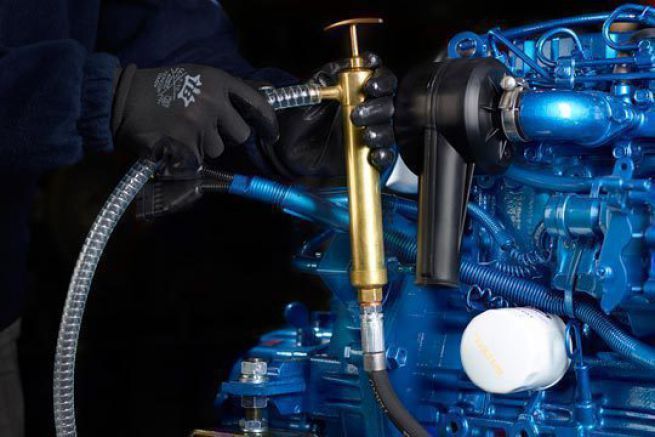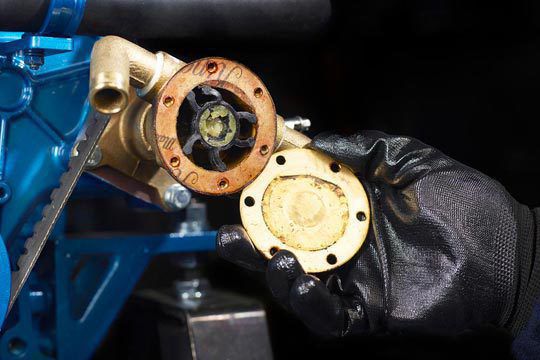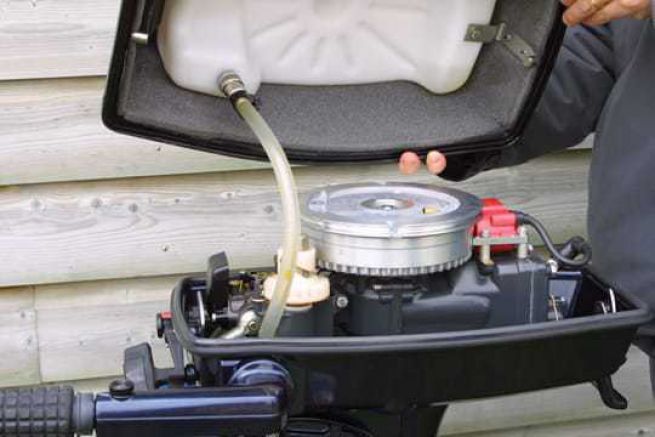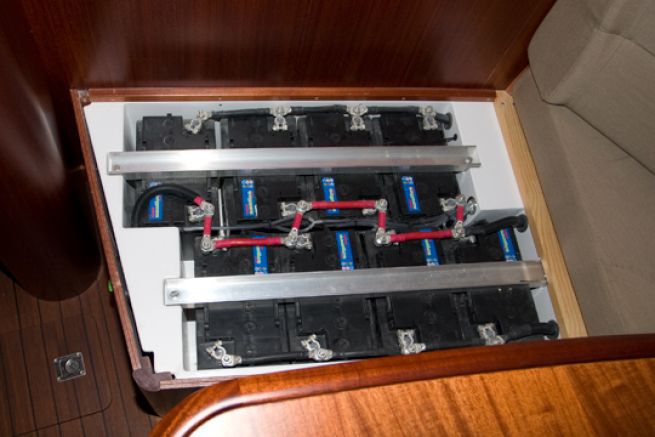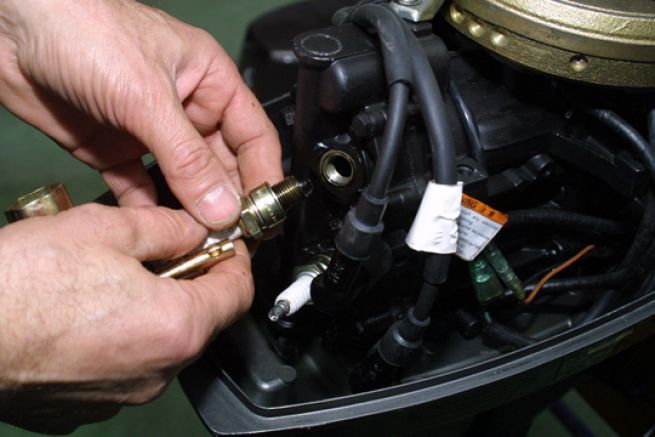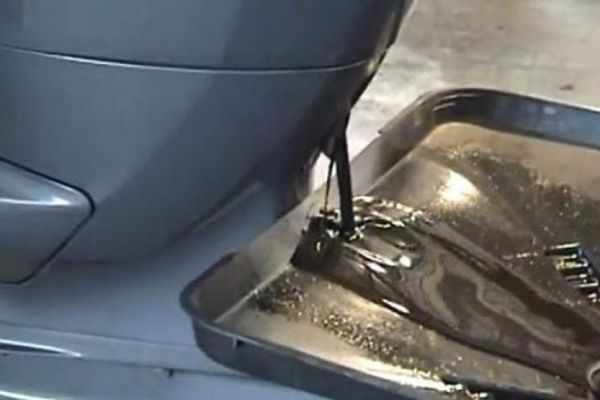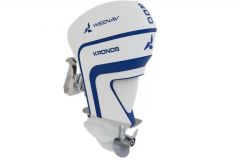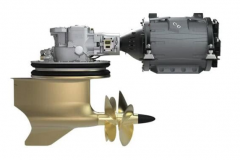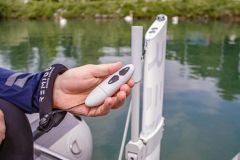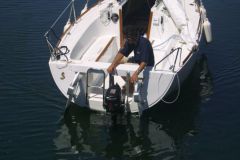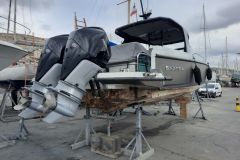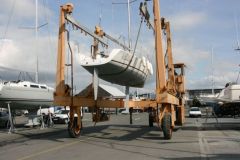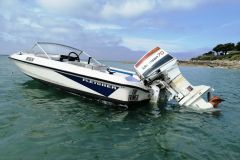When?
Outboard maintenance is done at the end and beginning of the season. For heavy users, schedule maintenance every 100 hours. You will find these instructions in the documents supplied with the engine.
What equipment?
Maintenance of an outboard requires no special tools. A basic toolbox with a set of wrench and screwdriver is sufficient. You will find the spark plug wrench with the tools supplied with the engine. Bring a few rags with you.
Some products are also useful. You will use WD40 (or equivalent), grease and oil. Choose a "marine" grease. It does not turn into a paste in contact with salt water.
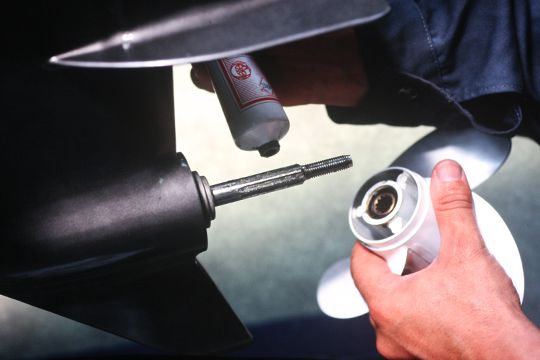
The propeller
Removing the propeller allows checking its condition and greasing the shaft. Once the propeller is removed, check the condition of the spinnaker seal (or lip seal). This is easily damaged if a fishing line has wrapped itself around the hub. You will therefore try to flush it out.
To block the propeller when tightening and loosening the central nut, a wooden wedge is inserted between the propeller and the anti-cavitation plate which blocks it. On low power engines, the propeller is secured to the shaft by a pin. The latter is designed to break if the propeller hits an object. It is therefore checked to make sure it is not twisted and changed if necessary.
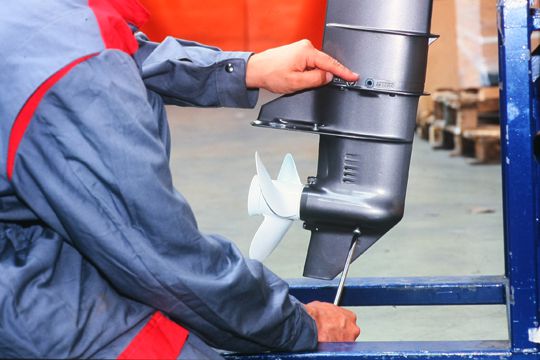
Draining the base plate
The base plate is a gearbox that runs in an oil bath. Once a year (or every 100 hours), it must be changed. This is to check whether water has entered the base plate (lip seal defect). Indeed, water in the oil forms what mechanics call "mayonnaise": the oil becomes white and opaque. If this is the case, the origin of this water ingress must be sought.
To drain, open the top cap of the base plate. Then the lower plug to let the oil flow into a container.
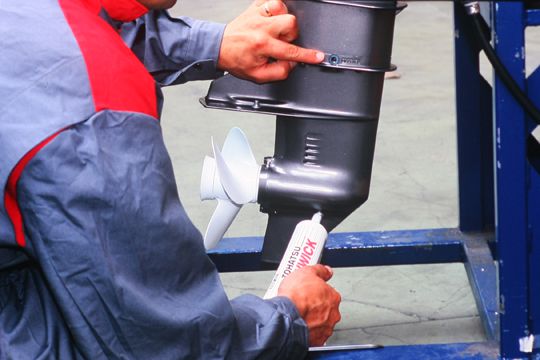
The filling is obligatorily done through the bottom opening. Filling from the top can lead to the formation of air bubbles that prevent oil from penetrating. Filling is effective when the oil comes out through the top plug.
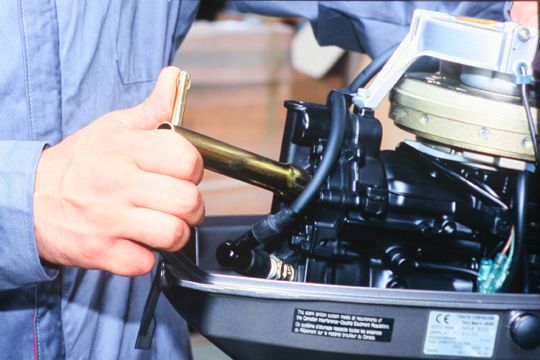
The candles
A clean spark plug ensures a good engine restart. That is why it is advisable to change them regularly, especially on a two-stroke engine where the oil is mixed with petrol. Avoid cleaning the spark plugs with a wire brush, as this can cause further damage.
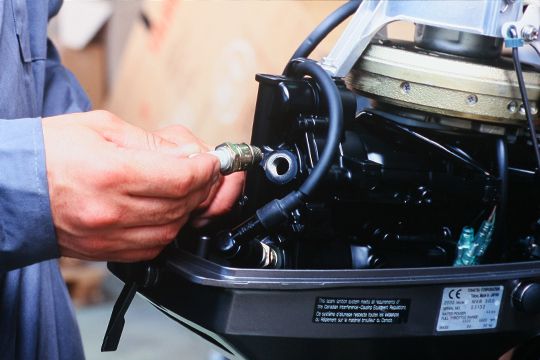
The fuel system
In the case of a separate tank (nurse tank or fixed tank), there must be no air intake in the fuel system. Therefore, the hose and bulb should be checked for cracks (which can occur over time).
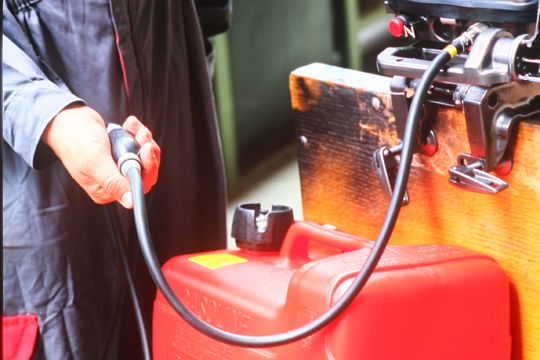
The fuel system is also protected by a filter. It must not be dirty (let alone clogged). Depending on the model, it can be changed or cleaned.
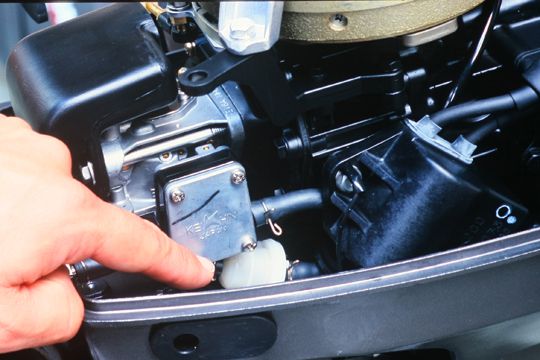
To avoid deposits, the carburettor tank(s) must be emptied at the end of each season. This can be done by disconnecting the fuel hose with the engine running and waiting for it to stall. But you can also unscrew the tank bottom screw on the carburettor and let the petrol flow.
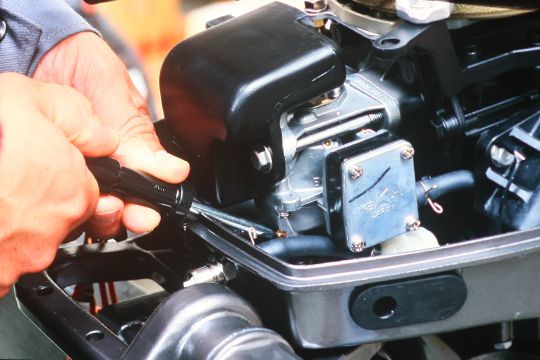
The anodes
All outboard motors are protected by anodes. For engines that do not stay submerged often (raised from the base to the port) it is not consumed quickly. Depending on their condition, it may be a good idea to change them.
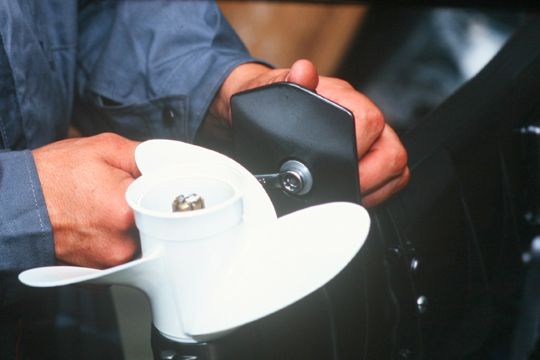
To find the anodes on an engine, consult the engine service manual. The anode under the anti-cavitation plate is the most common, but there may also be anodes on the engine block in the cooling system.
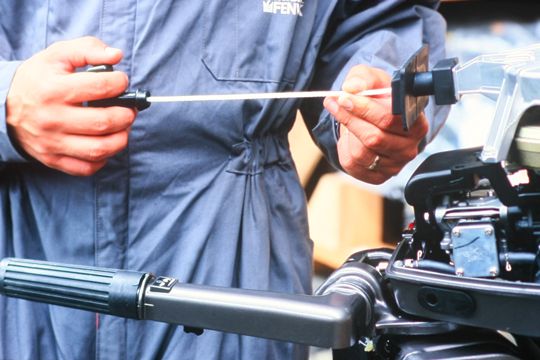
The thrower's rope
Smaller motors can be started with a manual starter. The rope you pull on is a wearing part. Care must be taken to ensure that it is not frayed. If there's any doubt, it's replaced. A minimum investment for a piece of rope which, if it breaks in the open sea, can cause you a lot of trouble.
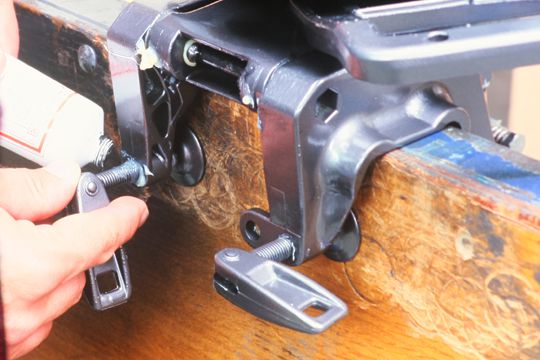
Lubrication points
Always in a wet environment, often in a difficult environment (salt water, sand...), an outboard motor suffers. To protect it, we grease all the joints such as the steering, the lifting gear, the control cables..
Watch and grease the press screws as well. They are made of stainless steel while the motor frame is made of aluminium. Electrolysis often blocks this curious marriage.
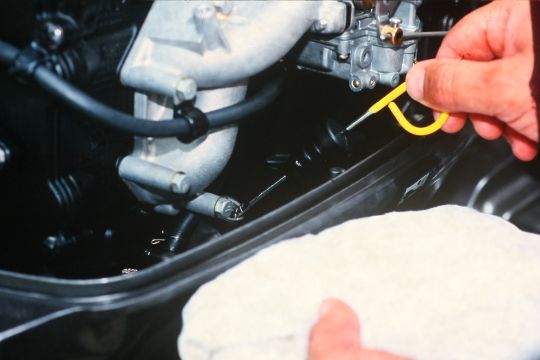
And on top of that, on a four-count...
Less polluting, quieter and more fuel-efficient, 4-stroke outboard motors are the response of manufacturers to increasingly stringent anti-pollution standards. Compared to a 2-stroke outboard, the 4-stroke outboard is lubricated by the oil contained in the crankcase. As in a car, the oil level must therefore be checked regularly using the dipstick.
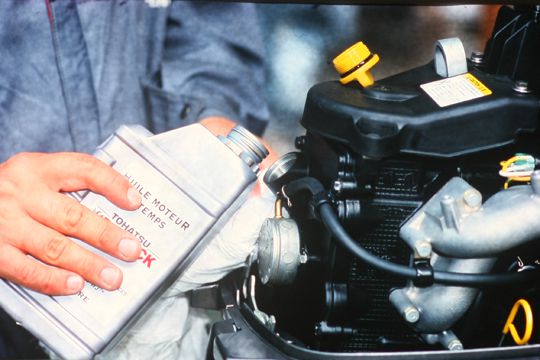
As part of the annual maintenance plan, the oil should be changed at the beginning of the season (or every 100 hours of operation). The beginning of the season is preferable to the end, because oil oxidizes when it comes into contact with the air. It is therefore not necessary to put in new oil and then let the engine sleep through the winter.




